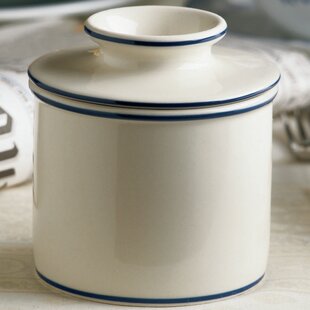- Joined
- Mar 23, 2015
- Messages
- 4,898
- Reaction score
- 3,419
What color paint is that? Oh, it is butter yellow and the latest color.


When separating butterfat from the milk, it works better, quicker if the milk is a bit acid, a bit lower pH. Letting the cream sour meant it had Lactobacillus growing in it, and that produces lactic acid which lowers the pH. That's also what gives buttermilk that delicious sour/tart taste.zimmerstutzen said:what butter we made was always from fresh sweet cream. What is the practical difference?
Southern/sour/cultured buttermilk is also excellent for making light, fluffy pancakes and such, in addition to tasting better. The acid in it reacts with baking powder or soda to leaven breadstuffs. If we don't have sour buttermilk for a recipe, we make "fake buttermilk" by adding one tablespoon of vinegar to every cup of milk used.zimmerstutzen said:Guess the butter milk we had wasn't the flavor changer, they used down south....
But, as I asked, is there a difference in the butter?
I suppose that depends on the amount of souring time and the presence of other bacteria or yeasts.I don't recall that the butter tasted any different made from sour/cultured cream than from sweet cream.
Spence
Could be, but I think it's likely the "sour" is in the milk/water element, not the butterfat. Also, once the butter is made, it is kneaded and washed to remove as much milk as possible so it won't spoil, and that possibly removes all the sour element.Colorado Clyde said:I suppose that depends on the amount of souring time and the presence of other bacteria or yeasts.
zimmerstutzen said:Ahh, The fresh milk we used was right from the cow. But the butter milk was never tart/sour, just tasted like skim milk. That is why I could never figure out why buttermilk pancakes or biscuits were supposed to be so good. Guess the butter milk we had wasn't the flavor changer, they used down south. To us butter milk wasn't any big deal, just the liquid left after the butterfat was removed from the cream. Looked a bit like whitish water with a bluish tinge. Just like skim milk.If wee did make butter, we did it within a day after the milk came from the cow.
But, as I asked, is there a difference in the butter?

Use the whip attachment for your hand-mixer (you can also use a stick blender, but it is more messy). Makes butter in about 1 minute (got tired of shaking jars of cream)...Ames said:Had to get up at 5 A.M. yesterday. Fill a quart mason jar half full of cream. Sit around for 20 minutes shaking watching the news ( that will get you shaking) till I had fresh butter.
Enter your email address to join: